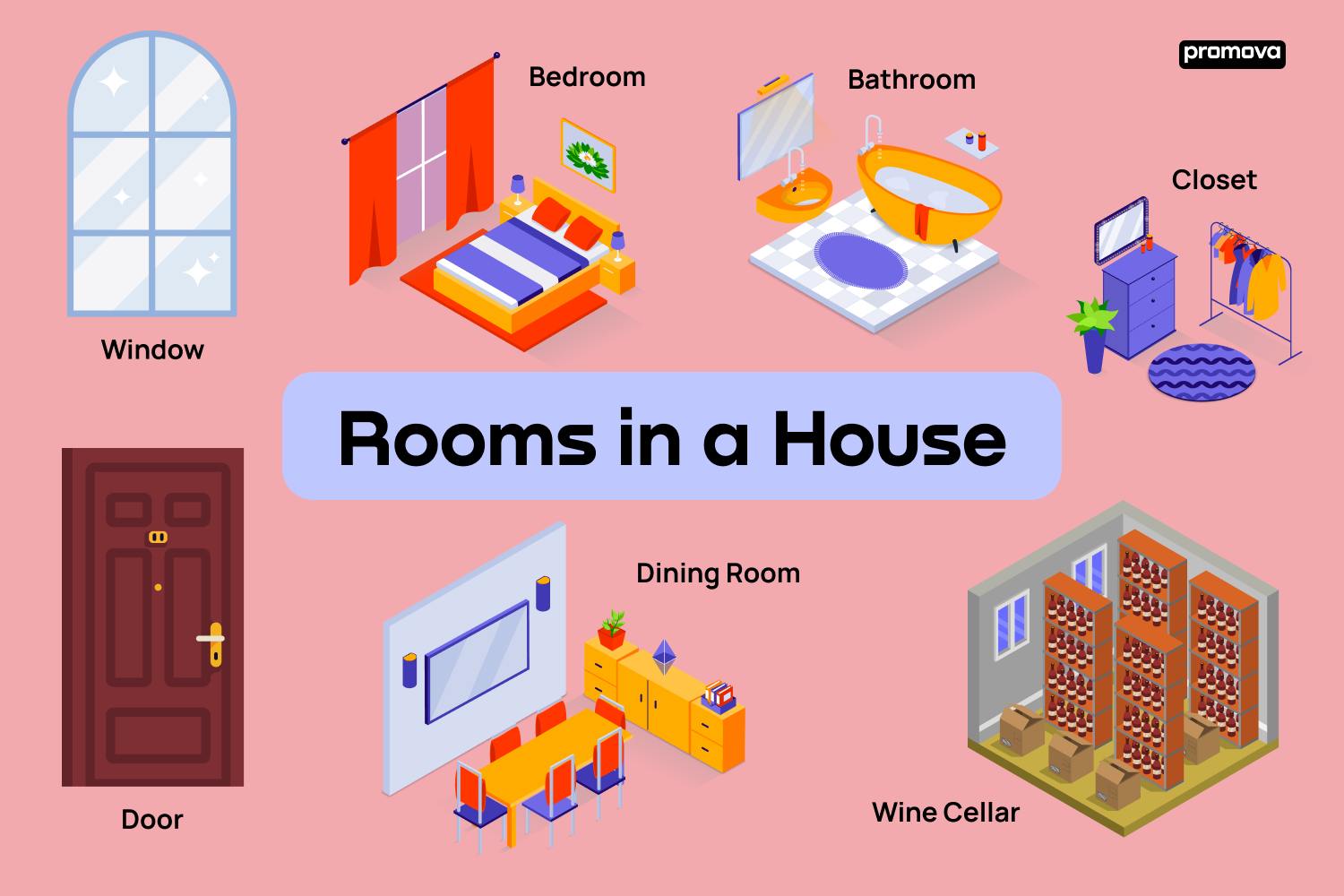
From social gatherings to relaxation and productivity, each room serves a distinct purpose and requires thoughtful design considerations. This article delves into the intricacies of different rooms in a house, exploring their functionalities, design elements, and practical tips for optimizing space and enhancing functionality.
I. Introduction
A. Definition of rooms in a house
Rooms in a house encompass designated areas that serve specific functions, ranging from communal spaces for socializing to private retreats for rest and relaxation.
B. Importance of understanding different types of rooms
Understanding the different types of rooms in a house is crucial for creating a functional and aesthetically pleasing living environment that caters to the diverse needs and preferences of occupants.
C. Overview of the Article
This article provides a comprehensive overview of various types of rooms in a house, including living spaces, sleeping spaces, functional spaces, and specialized spaces. By examining the unique characteristics and design considerations of each room, readers can gain insights into optimizing their living spaces for comfort and convenience.
II. Living Spaces
A. Living Room
The living room serves as the focal point of social gatherings and relaxation, featuring comfortable seating arrangements and entertainment amenities.
- Purpose and functionality: The living room is designed for socializing, entertainment, and relaxation, making it a versatile space for hosting guests and spending quality time with family.
- Design elements: Key design elements of a living room include comfortable seating, ambient lighting, and a focal point such as a fireplace or television.
- Common features: Common features of a living room include sofas, armchairs, coffee tables, rugs, and entertainment systems.
B. Family Room
The family room offers a more casual and intimate setting for everyday activities, such as watching television, playing games, and lounging.
- Distinctive features: Unlike the formal ambiance of a living room, the family room is characterized by a relaxed atmosphere and flexible seating arrangements.
- Usage patterns: Family rooms are often used for informal gatherings, family bonding activities, and recreational pursuits, making them a hub of daily life.
- Design considerations: When designing a family room, it’s important to prioritize comfort, durability, and functionality, with stain-resistant fabrics and versatile furniture arrangements.
III. Sleeping Spaces
A. Bedroom
The bedroom serves as a personal sanctuary for rest and rejuvenation, reflecting individual tastes and preferences in decor and ambiance.
- Sanctuary for rest: The primary function of a bedroom is to provide a peaceful and comfortable environment for sleeping, relaxation, and privacy.
- Personalization options: Bedrooms can be personalized with furnishings, decor, and color schemes that reflect the occupant’s personality and style preferences.
- Furniture essentials: Essential furniture items for a bedroom include a comfortable bed, bedside tables, dressers, and storage solutions to keep the space organized and clutter-free.
B. Guest Room
The guest room is a versatile space designed to accommodate overnight visitors and provide a comfortable and welcoming environment.
- Hospitality and versatility: Guest rooms are equipped with amenities to ensure the comfort and convenience of guests, such as a comfortable bed, storage space, and access to a bathroom.
- Space optimization techniques: Guest rooms should be designed to maximize space and functionality, with versatile furniture that can serve multiple purposes, such as a sofa bed or a daybed with storage drawers.
- Amenities for guests: To enhance the guest experience, consider adding amenities such as fresh linens, towels, toiletries, and thoughtful touches like a bedside lamp or alarm clock.
IV. Functional Spaces
A. Kitchen
The kitchen is the heart of the home, where culinary creations are prepared, and family gatherings take place, requiring careful consideration of layout and functionality.
- Layout and workflow: The layout of the kitchen should be optimized for efficiency and workflow, with a logical arrangement of work zones for cooking, cleaning, and food storage.
- Modern amenities: Modern kitchens are equipped with state-of-the-art appliances, such as stainless steel appliances, granite countertops, and custom cabinetry, to enhance functionality and aesthetics.
- Space optimization strategies: To make the most of limited space, consider innovative storage solutions, such as pull-out pantry shelves, vertical storage racks, and multi-functional kitchen islands.
B. Home Office
The home office is a dedicated workspace designed to foster productivity and creativity, with ergonomic design principles and technology integration.
- Productivity hub: The home office should be equipped with ergonomic furniture, task lighting, and organizational tools to create a conducive environment for work and concentration.
- Ergonomic design principles: Ergonomic design principles, such as adjustable desks and supportive seating, help prevent fatigue and discomfort during extended periods of work.
- Technology integration: Integrating technology into the home office, such as high-speed internet, printers, and video conferencing tools, enhances connectivity and facilitates remote work and collaboration.
V. Specialized Spaces
A. Home Gym
The home gym provides a convenient and private space for fitness enthusiasts to exercise and stay active, with careful consideration of equipment selection and space optimization.
- Fitness at home: Home gyms eliminate the need for costly gym memberships and commuting time, allowing individuals to exercise on their own schedule and in the comfort of their own home.
- Equipment selection: When designing a home gym, consider selecting versatile and space-saving equipment, such as adjustable dumbbells, resistance bands, and compact cardio machines.
- Space optimization strategies: To maximize space in a home gym, consider installing wall-mounted storage racks, foldable exercise equipment, and mirrors to create the illusion of a larger space.
B. Entertainment Room
The entertainment room is a dedicated space for leisure and relaxation, equipped with audiovisual technology and comfortable seating for an immersive viewing experience.
- Ultimate leisure zone: Entertainment rooms are designed for watching movies, playing video games, and enjoying recreational activities with friends and family, making them the ultimate leisure zone in the home.
- Audiovisual setup: To create an immersive entertainment experience, invest in high-quality audiovisual equipment, such as surround sound speakers, a large-screen television or projector, and comfortable seating arrangements.
- Comfort and ambiance enhancements: Enhance the comfort and ambiance of the entertainment room with plush seating, dimmable lighting, and decor elements that reflect personal interests and preferences.
By understanding the different types of rooms in a house and their unique characteristics, homeowners can create functional and aesthetically pleasing living spaces that cater to their lifestyle and preferences. From socializing in the living room to relaxing in the bedroom, each room plays a vital role in enhancing comfort, convenience, and overall well-being.


